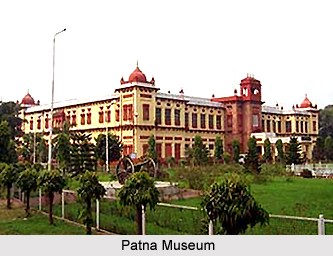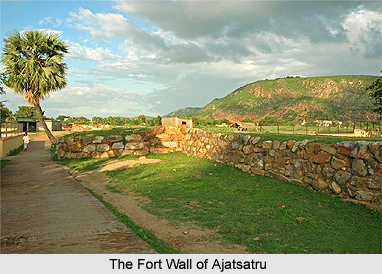 Leisure Tourism in Bihar is priceless who loves history. A number of Mughal monuments as well as other ancient buildings portray the rich history of Bihar.
Leisure Tourism in Bihar is priceless who loves history. A number of Mughal monuments as well as other ancient buildings portray the rich history of Bihar.
In case the tourists are wondering from where to begin, then Patna can give them the perfect start. This capital city was known as Pataliputra in ancient India. It has seen the rise and fall of numerous kingdoms.
The Patna Museum near the High Court houses a collection of Hindu and Buddhist stone sculptures, bronzes and terracotta sculptures. Among the exhibits is a 49 ft long fossil tree said to be 2,000 million years old and the longest tree fossil in the world. At the entrance of the hall, on the left, is the Didarganji Yakshi, a buff-coloured Mauryan sandstone statue of a woman which is considered to be one of the greatest masterpieces of Indian art of all times.
Apart from this there is the Golghar, Khuda Baksh Oriental Library, Raj Bhawan, Padri-ki-Haveli and others.
At Gulzaribagh, further east near the Mahabir Ghat, is a former British East India Company Factory, now a Government Printing Press. Visitors can visit the opium godowns, the former ballroom and the hall where Shah Alam II was crowned Emperor of Delhi on 12 March 1761.
 There the 56 miles south of Patna is Nalanda, "the place that confers the lotus" (nalam) or spiritual knowledge. This is the site of Sri Mahavihara Arya Bhikshu Sanghasya, a monastic university that flourished from the 5th century until 1199, when it was ransacked by the Afghan invader, Bakhtiar Khilji. The university, at the height of its activities, had a vast library, 2,000 teachers and more than 10,000 students from as far as Japan, Sumatra, Java and Korea. Legend has it that it contained 9 million volumes and that it burned for six months after the sack of Nalanda. Lord Mahavira, the last Jain Tirthankara, and Lord Buddha taught here. Nalanda developed as a centre of Buddhist learning.
There the 56 miles south of Patna is Nalanda, "the place that confers the lotus" (nalam) or spiritual knowledge. This is the site of Sri Mahavihara Arya Bhikshu Sanghasya, a monastic university that flourished from the 5th century until 1199, when it was ransacked by the Afghan invader, Bakhtiar Khilji. The university, at the height of its activities, had a vast library, 2,000 teachers and more than 10,000 students from as far as Japan, Sumatra, Java and Korea. Legend has it that it contained 9 million volumes and that it burned for six months after the sack of Nalanda. Lord Mahavira, the last Jain Tirthankara, and Lord Buddha taught here. Nalanda developed as a centre of Buddhist learning.
Buxar is the place where Lord Rama is said to have fought the demon Taraka and received, with Lakshman, higher knowledge from the sage Vishwamitra. Lord Ram is said to have left a footprint here at Ram Rekha Ghat. Nearby is the battlefield where, in 1764, the British defeated Mir Qasim, the last independent Nawab of Murshidabad and added Bengal and Bihar to their Indian possessions.
Other famous places of interest in Bihar are Ajatasatru Fort and Venuvana in Rajgir. To the east of the fort lies a Japanese temple, Nipponzan Myohoji.
A new site, Sarai Mound, has been excavated to the northeast. At this site half-faded frescos of horses and elephants have been discovered. East of the ruins, is a museum with Buddhist and Hindu stone and terracotta statues and figurines.
Besides these Sonepur Fair is a popular event in Bihar. Having its roots in the legends this fair is an age old affair. The fair traces its origin to the tale of two brothers who were devotees of lord Vishnu. Due to an enchantment one is changed to an elephant and the other into a crocodile. According to the tale on Kartik Purnima the elephant is attacked on the confluence of Ganga River and Gandak by the wicked crocodile. Lord Vishnu helps the elephant win. From then on a huge and unique fair is held to commemorate the elephants. But the moral of the story lies in the victory of the good over the evil.



















